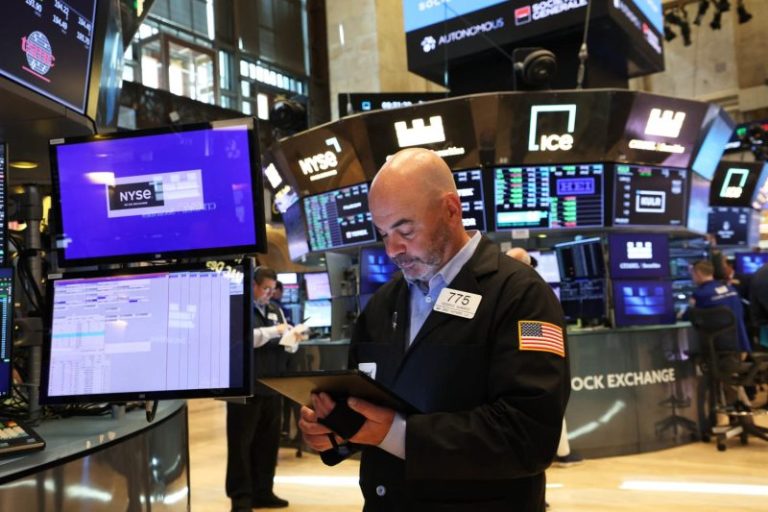NVIDIA (NASDAQ:NVDA) shares rose over 5 percent to hit US$142.50 on Thursday (May 29), extending a powerful rally that reflects Wall Street’s optimism in the chipmaker’s long-term trajectory
The company’s positive performance came despite a bruising blow from US export restrictions to China.
The semiconductor giant, seen by many industry experts as the backbone of the global artificial intelligence (AI) boom, reported better-than-expected financial results for its first fiscal quarter of 2026 on Wednesday (May 28), allaying fears that geopolitical tensions and tighter trade controls could derail its momentum.
In the face of a projected US$8 billion revenue hit from the export ban on China and a US$4.5 billion writedown on unsold inventory, investors appeared to focus on NVIDIA’s dominant position in the fast-expanding AI market.
“There is one chip in the world fueling the AI Revolution and it’s Nvidia,” wrote Dan Ives, a tech analyst at Wedbush Securities. “That narrative is clear from these results and the positive commentary from Jensen.”
NVIDIA posted quarterly revenues of US$44.1 billion, beating consensus analyst estimates of US$43.3 billion. That’s also a staggering 69 percent increase from the US$26 billion reported in the same quarter last year.
The company’s flagship data center division, which supplies AI chips to major clients like Microsoft (NASDAQ:MSFT) and Meta Platforms (NASDAQ:META), reported US$39.1 billion in sales.
Although that’s a slight miss from Wall Street’s US$39.2 billion forecast, it’s still up from US$22.5 billion last year.
“Our breakthrough Blackwell NVL72 AI supercomputer — a ‘thinking machine’ designed for reasoning — is now in full-scale production across system makers and cloud service providers,” said Jensen Huang, founder and CEO of NVIDIA.
“Global demand for NVIDIA’s AI infrastructure is incredibly strong. AI inference token generation has surged tenfold in just one year, and as AI agents become mainstream, the demand for AI computing will accelerate.”
Earlier this month, Huang traveled with US President Donald Trump to the Middle East, where the company reportedly secured orders for hundreds of thousands of chips from Saudi Arabia.
Yet NVIDIA’s latest results also expose the mounting risks the firm faces as global trade policy tightens.
In recent months, Washington has sharply escalated restrictions on semiconductor exports to China, targeting chips like NVIDIA’s H20 — a China-specific product designed to comply with US rules. The US Department of Commerce has banned shipments of these chips to Chinese firms, citing concerns about potential military applications.
The move forced NVIDIA to write off US$4.5 billion in H20 inventory, and the company estimates a US$2.5 billion revenue loss in the current quarter as a result. Huang placed the broader impact of the China restrictions at US$15 billion.
“The US$50 billion China market is effectively closed to US industry,” he said in an interview. “We are exploring limited ways to compete, but Hopper is no longer an option. China’s AI moves on with or without US chips.”
While NVIDIA has previously indicated that it could redesign chips to meet evolving US export rules, Huang has become increasingly vocal in his criticism of Washington’s policy direction. Speaking to reporters after NVIDIA’s earnings call, he described the restrictions as a “failure” that will ultimately hurt American companies more than Chinese rivals.
The pressure on NVIDIA intensified further this week, as the Financial Times reported that Trump has instructed US suppliers of chip-design software to halt sales to Chinese firms.
Nonetheless, NVIDIA’s strong earnings, coupled with a federal court ruling blocking some of Trump’s proposed tariffs, have reassured investors. AI-driven demand appears robust enough to offset near-term geopolitical volatility.
For now, the markets have spoken — and they’re betting big on NVIDIA’s future.
“Countries around the world are recognizing AI as essential infrastructure — just like electricity and the internet — and NVIDIA stands at the center of this profound transformation,” Huang emphasized post-earnings.
NVIDIA’s share price spike this week put it on track for its highest close since January, and triggered a broader rally across the semiconductor sector.
Securities Disclosure: I, Giann Liguid, hold no direct investment interest in any company mentioned in this article.










